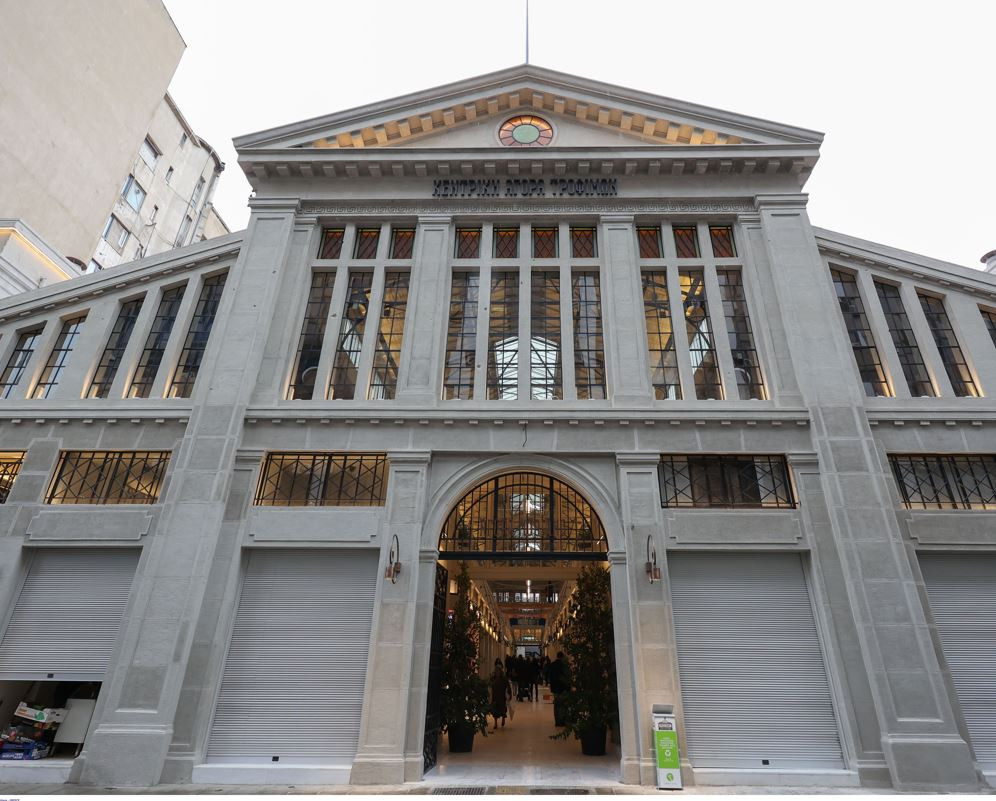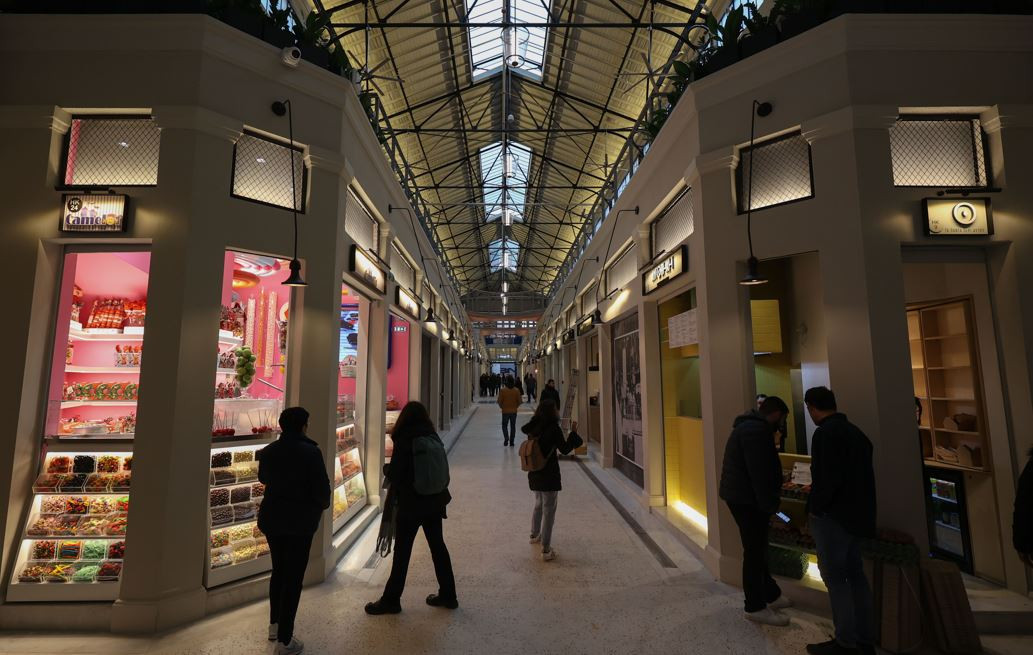It was reborn from its “ashes” and emerged as a modern covered food market, in a highly aesthetic space, which (re)claims its former glory as one of the most well-known landmarks of the city.
For a century, it composed a distinct mosaic of people, tastes and cultures in the “heart” of cosmopolitan Thessaloniki until it surrendered to the wear and tear of time, lowered its shutters and its once bustling corridors sank into unprecedented silence.
Until some time ago it was reborn from its “ashes” and emerged as a modern covered food market, in a highly aesthetic space, which (re)claims its former glory as one of the most well-known landmarks of the city.
Sami and Lou Feis (co-owners of the Feis Group) wanted to give a second chance to the Modiano Market by opening a new chapter of a food market in the standards of Europe’s covered markets, but always with respect to the history and memories it carries.
Memories retrieved from the mind and soul of people who lived through the heyday as well as its decline to be passed down intact to the next generations through a collective work (album), entitled “Agora Modiano/Thessaloniki”, published by Capon Publications and is presented, tonight (at 19:00), in its natural space, the Agora itself.
“The variety of texts contained in the book captures the diverse character of the Agora.
Texts by citizens, university students, businessmen, athletes, institutional bodies of Thessaloniki, artists and also authentic testimonies of shopkeepers who lived for many years “To Modiano” outline the atmosphere of the Agora.
The rich photographic material that accompanies the publication captures nostalgic snapshots of the past as well as images from the modern operation of the Agora”, it says on the back cover of the elegant publication, which was edited by Dr. Modern Greek Philology AUTH – author Leon A. Nar.
A mosaic of tastes, people and cultures
In the childhood perceptions of the former Vice-President of the Government and Minister of Foreign Affairs, Professor of Constitutional Law at the Law School of the AUTH Evangelos Venizelos, the Agora was the place of abundance, variety and quality.
And in his adult performances, the famous Stoa Modiano is “tied” to the Saturday lunchtimes in Vovidia and Myrovolo Smyrni, the music and dances inside and outside the Stoa, the great pandime celebrations on Christmas and New Year’s Eve, the samali, the efforts to operate more “educated” catering businesses within it but also the wear and tear of time that led it to search for a new identity.
The “most important and famous urban market of the city together with those characteristic types” have been forever impressed on the mind and soul of the writer-songwriter Thomas Korovini, who recounts with his unique pen his cosmopolitan experience in the Modiano Market, the one she experienced as a child still wandering the corridors of the Stoa but also growing up “…until the Agora began to empty and impoverish and its clientele to thin out and change”.
“The ouzos with their snacks, the music, the songs from the groups and from the gypsies with the instruments” that make up the last beautiful phase of the Modiano Market before the decline comes, recalls the chemist-oenologist Yannis Boutaris and remembers the sadness that he felt walking through its deserted corridors with the abandoned shops and the absence of the magical smells and noise of the world that wandered its corridors.
“However, every end is also a beginning”, he says, and the evolution of Agora seems to vindicate him.
The Agora Modiano of Kostis Moskofs and the bellmen is vividly described by the journalist Stavros Tzimas and he remembers the Thessaloniki historian and mega-cosmopolitan – this emblematic figure of the Agora (and not only) – having “watered” with tsipoura and retsina , standing on the bench of “Peter” (one of the haunts in the gallery), as well as the great Louis Aragon…
“What do I remember from Modiano? A lot of work, a lot of people, the shops were small, people were jostling to get through. There was no way you could pass through Modiano without stopping,” recalls Kaiti Gosi, whose husband, Michalis, who is no longer alive, ran a butcher’s shop in the Modiano Market.
All the above together with: Konstantinos Zerva, Michalis Zorpidis, Nikos Kalogirou, Anastasia (Tasoula) Kelesidou), Nikos Marantzidis, Argyris Bakirtzis, Paraskevi (Voulas) Patoulidou, Stergios Picsiorla, Dionysis Savvopoulos, Noda Stylianides, Ari Stylianou, Tasso Telloglou, Apostolos Tzitzikostas, Konstantinos Tornivoukas, Thanasis Triaridis, Costas Tsaoulis, Mary Hatzakou and the contributors to the restoration (Kleopatra Theologiou, Morpho Papanikolaou, Dimitri Triando, Eleftheria Deco and Hasdai Capon) share stories that could also function as another time machine for the fascinating story of a flagship market.
Today, the purpose of the new generation of Modiano Market, as stated by the general manager of Fais Group, Hasdai Capon, is: “…to offer visitors exquisite Greek and multicultural experiences from the market of fresh and packaged products with a variety of tastes. But also many events and entertainment, making it not only a modern food market but also a place of social gathering”.
Source: Skai
I have worked as a journalist for over 10 years, and my work has been featured on many different news websites. I am also an author, and my work has been published in several books. I specialize in opinion writing, and I often write about current events and controversial topics. I am a very well-rounded writer, and I have a lot of experience in different areas of journalism. I am a very hard worker, and I am always willing to put in the extra effort to get the job done.












